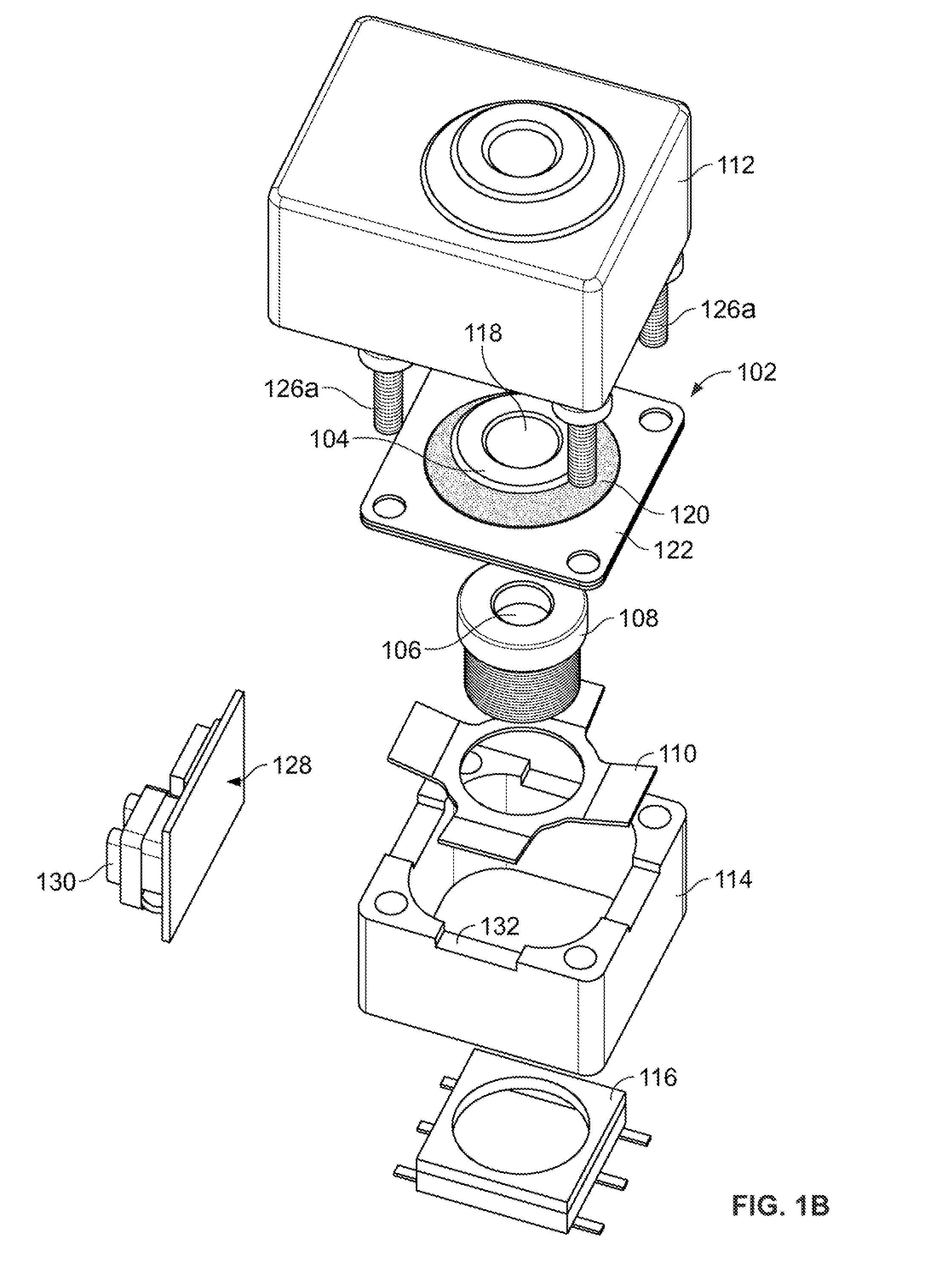Optical lens image stabilization systems
a technology of image stabilization and optical lens, applied in the field of optical lens systems, can solve the problems of high power consumption, long response time, and limited accuracy
- Summary
- Abstract
- Description
- Claims
- Application Information
AI Technical Summary
Benefits of technology
Problems solved by technology
Method used
Image
Examples
Embodiment Construction
[0057]Before the devices, systems and methods of the present invention are described, it is to be understood that this invention is not limited to a particular form fit or applications as such may vary. Thus, while the present invention is primarily described in the context of a variable focus camera lens, the subject optical systems may be used in microscopes, binoculars, telescopes, camcorders, projectors, eyeglasses as well as other types of optical applications. It is also to be understood that the terminology used herein is for the purpose of describing particular embodiments only, and is not intended to be limiting, since the scope of the present invention will be limited only by the appended claims.
[0058]Referring now to the drawings, FIGS. 1A and 1B illustrate an optical lens system of the present invention having auto-focus capabilities. The figures detail a lens module 100 having a lens barrel 108 holding one or more lenses (not shown). An aperture 106 is provided at a dis...
PUM
 Login to View More
Login to View More Abstract
Description
Claims
Application Information
 Login to View More
Login to View More - R&D
- Intellectual Property
- Life Sciences
- Materials
- Tech Scout
- Unparalleled Data Quality
- Higher Quality Content
- 60% Fewer Hallucinations
Browse by: Latest US Patents, China's latest patents, Technical Efficacy Thesaurus, Application Domain, Technology Topic, Popular Technical Reports.
© 2025 PatSnap. All rights reserved.Legal|Privacy policy|Modern Slavery Act Transparency Statement|Sitemap|About US| Contact US: help@patsnap.com



